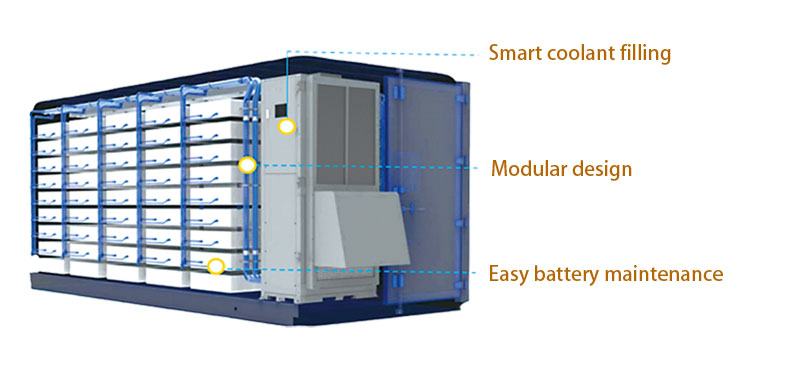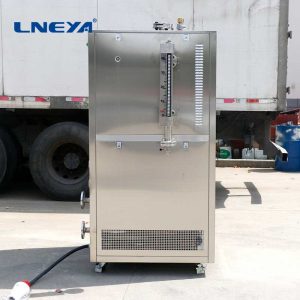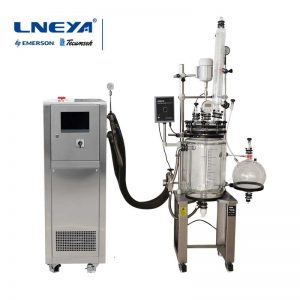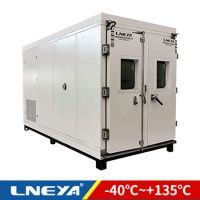Battery Energy Storage System Cooling Solutions: Liquid Cooling VS Air Cooling
Battery Energy Storage System Cooling Chiller is a device used in battery thermal management. Common cooling methods in battery thermal management include air cooling and liquid cooling. So, do you know the difference between these two cooling methods?
There are two thermal management methods for lithium battery units, air cooling and liquid cooling have their own characteristics. Battery Energy Storage System Cooling Chiller can be highly integrated with the battery pack, easy to install on site, occupies a small area, and there is no need to worry about dust, water vapor condensation and other issues. In the case of thermal runaway precursors, the liquid cooling solution can rely on a large flow of cooling medium to force the battery pack to dissipate heat and realize heat redistribution between battery modules, which can quickly avoid the continuous deterioration of thermal runaway and reduce the risk of runaway. The air cooling system has the characteristics of simple system, low manufacturing cost, and easy installation. It is widely used in scenarios where the battery energy density is low and the charging and discharging speed is slow.
1. Under the same inlet temperature and harsh wind speed and flow rate, the temperature of the liquid-cooled battery pack should be 30-40°C, while the temperature of the air-cooled battery pack should be 37-45°C. Liquid-cooled Battery Energy Storage System has better temperature uniformity.
2. In order to achieve the same average battery temperature, air cooling requires several times higher energy consumption than liquid cooling. Under the same power consumption, the temperature of the battery pack is higher for air cooling than for liquid cooling. Liquid cooling consumes less power.
3. Due to factors such as air specific heat capacity and small convective heat transfer coefficient, the heat transfer efficiency of battery air cooling technology is low, and the heat generated by the battery increases, which will lead to excessively high battery temperature and the risk of thermal runaway; the liquid cooling system can greatly reduce the thermal runaway of the battery risk.
4. The liquid cooling system is easier to ensure that the battery works at a comfortable temperature. Compared with the air cooling system, the battery life will be extended, and the investment in liquid cooling is less in terms of the overall life cycle.
The air cooling system has the advantages of small initial investment, low maintenance cost, and easy maintenance. It is more suitable for small civilian or commercial battery thermal management. However, Battery Energy Storage System Cooling Chiller has gradually become a suitable battery cooling method in large-capacity and high-energy-ratio fields such as large ground power stations.
| Air Cooling VS. Liquid Cooling | ||
| Air Cooling | 액체 냉각 | |
| heat exchange medium | Air | Liquid |
| drive parts | fan | no fan required |
| heat dissipation | General | The specific heat capacity of the coolant is 1000 times that of air, and the heat dissipation capacity is much higher than that of air cooling |
| energy saving | PUE is within 2.2 | PUE is within 1.2 |
| noise | high noise | low noise due to no fan |
| construction cost | The low-density layout of the cabinets takes up a large area of the equipment room, requiring the use of traditional precision air conditioners and cold and hot pipeline designs. | The high-density layout of the cabinet reduces the occupied area, and the low PUE means that the power supply, power distribution and infrastructure scale facilities are reduced. |
| site selection | It has high requirements on environmental climate and power factors. | It is not affected by the environment and climate, and is not restricted by energy policies, so it can be deployed anywhere. |
제품 및 솔루션
| 모델 | CNYL -45 |
| 냉각 용량 | 45KW |
| 온도 제어 정확도 | ±0.5℃ 실시간 온도 기록 |
| 2차 냉매 | 에틸렌 글리콜 부동액, 냉매 순환 시스템의 완전 밀폐형 설계 |
| 냉매 | R410A |
| 흐름 | 300L/min~400L/min 디스플레이 기록 설정 |
| 저압 전기 | 슈나이더/지멘스 |
| 디스플레이 화면 | 7인치 컬러 터치 스크린 |
| 전원 | 380V 50HZ 선택 220V60HZ 460V 60HZ |
| 셸 재질 | 냉간 압연 시트 스프레이 REL7035 |
| 내부 배관 | SUS304 |
| 모델 | CNYL-5 | CNYL-8.5 |
| 냉각 용량 | 5KW | 8.5KW |
| 정확성 | ±0.5℃ 실시간 온도 기록 | ±0.5℃ 실시간 온도 기록 |
| 최소 급수 온도 | 15℃(배터리 시스템에 따라 맞춤 설정 가능) | 13℃(배터리 시스템에 따라 맞춤 설정 가능) |
| 시스템 압력 센서 감지 | 액체 배출구 압력, 액체 유입구 압력, 냉장 시스템 고압 및 저압 | |
| COP | *2.0 | *2.2 |
| 압축기 | 밀폐형 압축기(1세트) | 34cm3 /rev완전 밀폐형 스크롤 압축기(1세트) |
| 냉매 | R410A | R410A |
| 디스플레이 | 7인치 컬러 터치 스크린 | 7인치 컬러 터치 스크린 |
| 주변 작동 온도 범위 | -45℃~55℃ | |
| 제어 전압 범위 | 18-32V | 18-32V |
| 냉동 고압 최대 전력 | 2.2KW | 3.5KW |
| 냉장 평균 입력 전력(kW) | 주파수 +1.5kw 조절 가능 | +2kw 조절 가능한 주파수 |
| COP | *2.0 | *2.2 |
| 모델 | CHDYL-4 |
| 냉각 용량 | 4KW |
| 정확성 | ±1℃ 실시간 온도 기록 |
| 압축기 | 밀폐형 압축기(1세트) |
| 냉매 | R134A |
| 디스플레이 | 7인치 컬러 터치 스크린 |
| 제어 시스템 | PLC |
| 커뮤니케이션 | CAN |
| 주변 작동 온도 범위 | -45℃~55℃ |

완벽한 온도 제어 시스템 설계 및 제조를 제공합니다. 표준 모델부터 완벽한 맞춤형 제품까지 1000톤. 당사는 고객 서비스를 전문으로 하며 각 고객이 특정 요구에 맞는 최적의 온도 제어 시스템을 갖출 수 있도록 최선을 다하고 있습니다.
표준이 아닌 맞춤형 솔루션을 제공합니다.
이메일: info@lneya.com WeChat ID: +8615251628237 WhatsApp: +86 17851209193

 LNEYA
LNEYA
 简体中文
简体中文



















































































